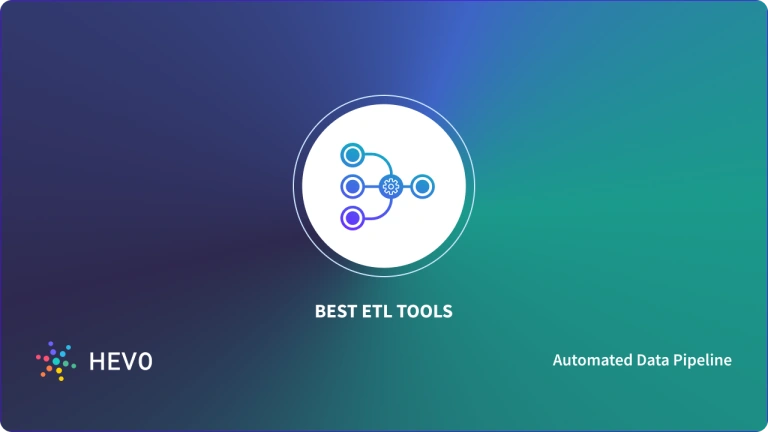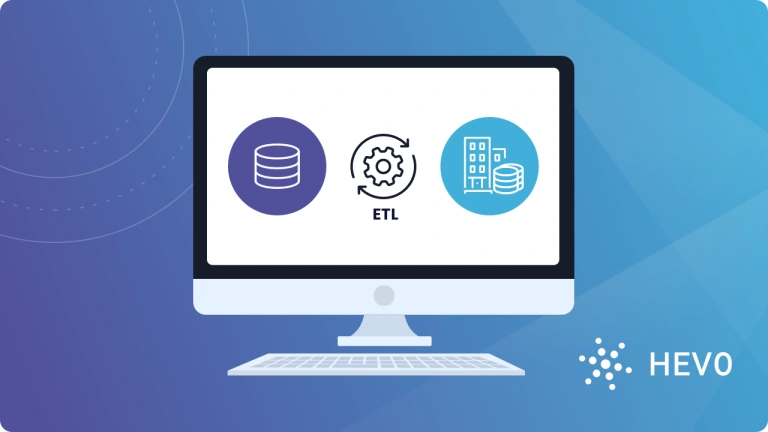ETL stands for Extract, Transform, and Load. ETL is a process of transferring data from various sources to target destinations/data warehouses and performing transformations in between to make data analysis ready. Managing data is a tedious task if done manually and leads to no guarantee of accuracy. By not using an ETL solution, Businesses can end up with a lot of data that is not in a ready-to-use format. Nowadays, the majority of companies use automated ETL tools to move their data, as creating and maintaining manual ETL pipelines is time-consuming and requires significant effort.
However, not all ETL tools are the same, and selecting the right one for your project can be difficult. In this blog, we’ll discuss the factors you should consider for ETL tool evaluation and how these factors affect your data management strategy.
Table of Contents
What are ETL Tools?
ETL tools are data integration solutions that extract data from various sources, such as SaaS applications, databases, cloud storage, flat files, etc., transform the data into an analysis-ready format, and load the data in desired destinations like data warehouses, databases, and data lakes. These ETL tools will make extracting raw data, transforming them into usable form, and loading them to a centralized destination easy and fast. How they do this may vary by the architecture or transformational capabilities of the tools. Some use high-code solutions, while others use low-code or no-code solutions.
ETL tools enhance data quality, access, and consistency and are, therefore, one of the most critical aspects of effective data management and decision-making. It is possible to save a great deal of time and resources by using such types of ETL tools that bypass companies from developing and maintaining their own data pipelines, which would otherwise be time-consuming and costly.
Key Factors for ETL Tool Selection Criteria
Here are some key factors you should consider when evaluating ETL tools to make sure you make the right choice for your data integration requirements:
1. Pre-built Connectors and Integrations
The first and foremost requirement to assess before ETL tool selection is whether they support the data sources and destinations your organization already uses. In case they do not, do they offer an option to build custom connectors?
The availability of pre-built connectors and integrations also allows the tool to easily connect with various data sources like SaaS applications, cloud storage, APIs, databases, etc. These connectors are pre-built, so you can extract and load data without having to configure them and do all that coding yourself in a flash. Not only do they reduce the effort to configure, but they also save time.
An added advantage is that they support a wide variety of sources and destinations, which not only ensures scalability but also gives your organization the option to add new sources to their workflow in the future.
Hevo is a fully automated ETL tool that helps transfer data from various sources to destinations. With its 150+ pre-built connectors, ETL workflows are efficient as well as rapid. It is easy to use with its no-code user interface.
Hevo salient features include:
- 150+ pre-built connectors to connect various sources to destinations like Redshift, Snowflake, and BigQuery.
- Easy to use Interface; No need for any prior coding knowledge.
- Highly Scalable and fault-tolerant architecture.
- Transparent pricing with various tiers to choose from to meet your varied needs.
- Real-time data integration ensures that your data is always analysis-ready.
- Exceptional customer support and extensive documentation to help you if you are stuck somewhere.
- End-to-end encryption and HIPAA, GDPR, and SOC2 Type II compliant.
- Both pre-load and post-load transformation capabilities.
- Supports incremental data load.
- G2 Rating: 4.3 out of 5 stars (237)
Thousands of customers trust Hevo for their ETL process. Join them and experience seamless data migration.
Get Started with Hevo for Free2. Ease Of Use
Another essential factor to consider in your journey of ETL tool evaluation is ease of use. Nowadays, both high code and low/no code etl tools are available. The high-code ETL tools require a fair amount of coding knowledge and have a steep learning curve. Low-code or no-code tools can be used by non-technical business users as well. Both type of tools have their pros and cons. High-code tools give more control and customization options, whereas no-code is easy and user-friendly. This depends on the workforce and experience level of the people who will be using the tool.
But an ETL tool that supports low/no code will allow a wide range of people access to the tool. Its intuitive design and user interface play a major role in this too. Make sure you take a demo before choosing the right tool for you. Schedule a personalized demo with Hevo and experience seamless no-code ETL.
3. Scalability and Performance
The assessment of ETL tools could be evaluated with reference to scalability and performance among the list of other evaluation criteria. When organizations expand, the volume of data grows. The selected ETL tool should facilitate large-scale data operations without performance deficiency. A good ETL solution must allow organizations to integrate new sources and further develop operational expansions without compromising the workflow.
Performance also plays an important part. The ETL tool should be able to manage and process data in a fast manner, guaranteeing full reliability and no data loss. Also, data loading latency should be low. When a solution has a high performance and also great scalability, your company will not only transform easily into shifting landscapes of data but will ensure the efficiency of operations as well. When looking for an ETL solution, look for features like High scalability, fault tolerance, and low latency.
4. Pricing
This goes without saying: Pricing plays the most important role when it comes to ETL tools selection criteria. Different tools offer different pricing options and tiers. It is important to choose the pricing that is right for your organization and within your budget. There are different ways ETL solution pricing works. Some work on credits, and some work on events. It is important to understand the different pricing tiers offered and choose the pricing option that best suits your data integration requirements.
Choose a tool that offers transparent pricing and all the required features in your data management strategy. Some tools like Hevo also offer custom plans tailored to your requirements so that you only pay for what you need.
5. Batch Processing or Real-time Processing
In the current times, businesses require real-time data processing to make data-driven decisions with great speed. Traditionally, ETL was in batch form, while data were historically loaded into destinations at fixed intervals of time ranging from an hour to days, depending upon the importance of the data involved.
If streaming data-ETL or batch-ETL must be used depends on the data type and its urgency. If data needs to be processed in real-time so that a decision can be forwarded, an ETL that allows real-time integration of data would be appropriate. Some tools allow you either to go batch-wise or stream-wise.
6. Customer Support
This might not seem like an important factor to consider at first, but in the long term, it is one of the critical factors you should consider for ETL tool evaluation. This is how your queries will be solved if you are stuck somewhere, and poor customer service can lead to data loss as well as monetary loss.
Customer support includes support via chat, email, or calls. However, it is not limited to that; you should also consider other resources such as documentation, FAQs, forums, and videos. It is beneficial to understand the customer support offered before choosing an ETL service. Some ETL solutions offer paid dedicated customer support, while most of them have free support. Choose an option that suits your business needs and requirements.
7. Security and Compliance
Security and Compliance play an important role in ensuring that your data is safe and sound. It’s very important to check on compliance certifications and policies related to security. Some of the general Compliance certifications include SOC2, HIPAA, and GDPR. Select the ETL tool after checking for these compliance certifications.
Also, check for encryption and customer data retention to ensure your data is reliable and accurate. Since ETL tools transfer data via data pipelines, it is essential to check for encryption not only at rest but also during transit. Choose an ETL solution that regularly updates its security policies to stay ahead of the latest security challenges and protect your sensitive data.
Additional Features to Consider for ETL Tool Selection Criteria
Now that we have discussed all of the most important factors in considering ETL tools, here are a few other features you might like to consider:
- Support for multiple users and teams can enhance collaboration and help make data-driven decisions faster.
- Automatic schema management reduces time as well as manual effort to map schema from source to destination manually.
- Both pre-load and post-load transformation capabilities, i.e., support ETL & ELT.
- Intuitive and user-friendly interface.
- Advanced transformation options for complex transformations and customizations.
- Offers an incremental data load that allows you to transfer modified data in real-time.
- Customer reviews and ratings to understand how the tool performs in real-world scenarios.
Conclusion
So, to wrap up, Selecting the right ETL tool is essential for effective data management and quicker decision-making. This blog talked about various key factors to consider for ETL tools evaluation, such as pre-built connectors, ease of Use, scalability, performance, pricing, processing methods, customer support, and security. Keep all these factors in mind while choosing an ETL solution to meet your data needs best. ETL requirements are essential for designing a streamlined data pipeline, covering aspects like data quality, transformation processes, and system compatibility.
Additionally, Consider the additional features to make your decision to enhance the efficiency and effectiveness of your ETL process. Choosing an effective ETL solution not only enhances your data integration needs but also makes the decision-making process faster and more accurate. With options like Hevo, Companies can experience seamless data migration and transformation for their ETL processes. Hevo is a no-code ETL solution that really improves your data management workflow. Sign up for Hevo’s 14-day free trial and experience seamless ETL.
FAQs
1. Is SQL an ETL tool?
No, SQL is a programming language for managing relational databases, whereas ETL tools are tools that extract, transform, and load data from source to destination.
2. What are the 4 types of ETL tools?
The 4 types of ETL tools are:
Traditional ETL Tools
Data Integration Platforms
Open Source ETL Tools
Cloud-based ETL Tools
3. Does ETL tool require coding?
Most of the existing ETL tools open a no-code/low-code interface for the creation of data workflows. Users can do all this work without digging into any coding knowledge. Coding is required in some cases of transformation and advanced customization.












